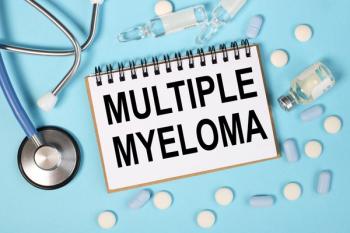
Health Care Delivery
Latest News

What We’re Reading: Medicaid Housing Support; AstraZeneca Cell Therapy Investment; Antismoking Campaign Relaunch

Stigma, Discrimination Impact Sexual and Gender Minority Perspectives on Full-Body Skin Examinations, Study Finds
Latest Videos

CME Content
More News

The gene therapy delandistrogene moxeparvovec-rokl, also known as Elevidys (Sarepta Therapeutics) is indicated to treat Duchenne muscular dystrophy (DMD) in ambulatory patients aged 4 to 5 years, and Sarepta recently filed supplemental data with the FDA seeking to expand the labeled indication.

About half of patients receiving the procedure did not need medication to control their blood pressure after 5 years.

Among Medicare beneficiaries, implantation was especially frequent for female patients and those undergoing tricuspid valve replacement with or without concomitant left-sided heart surgeries.

The use of ibudilast in the treatment of progressive multiple sclerosis (MS) has been suggested to reduce lesion volume in patients.

Novo Holdings to acquire Catalent for $11.5 billion; cancer incidence is expected to surge 77% by 2050; Silicon Valley’s county takes a bold step to address the rising loneliness crisis.

A state-wide analysis draws attention to the fact individuals with sickle cell disease (SCD) completed a vaccination against COVID-19 at nearly half the rate of individuals without SCD.

The authors say their 3D model improves on results using traditional 2-dimensional approaches.

The Center on Health Equity and Access provides real-time updates, shares cutting-edge research, and supports continuous efforts dedicated to tackling health care disparities and enhancing widespread access to high-quality health services.

The article emphasizes the significance of accreditations in addressing health disparities and promoting health equity, highlighting programs for achieving accreditation and advocating for the integration of social determinants of health (SDOH) and health equity practices within pharmacy and health care.

Patients with comorbid acute myeloid leukemia (AML) and myelodysplastic syndrome (MDS) expressed a desire to discuss treatment options and maintain normalcy; they were not willing to have conversations involving their prognosis and future.

A retrospective analysis surveys the treatment landscape and patterns of patients with paroxysmal nocturnal hemoglobinuria (PNH), illuminating high hospitalization rates and emergency department use despite the availability of multiple treatment options.

A systematic review of randomized controlled trials and prospective cohort studies concludes that sleep could be a prognostic component of lower back pain, but better evidence is needed.

The findings not only underscore the efficacy of 2 major interventions—Behavioral Activation Psychotherapy (BA) and Antidepressant Medication Management (MEDS)—but also support patient autonomy in choosing their preferred path to mental well-being.

A large-scale, population-based study examined patterns of disease-modifying therapy (DMT) exposure in pregnant patients with MS since 2010, revealing increased occurrences and the need for future studies to examine the impact of newer-developed DMTs.

Days spent obtaining health care outside the home may show access to needed care, but also add up to substantial time, effort, and cost burdens to patients and those who care for them, according to the study authors.

Medicare-eligible patients with cutaneous squamous cell carcinoma (cSCC) could save on health care costs by utilizing the 40-gene expression profile (40-GEP) to guide treatment decisions.

A national analysis found significant disparities between non-binary transgender individuals and cisgender individuals related to mental health.

This analysis compared outcomes among patients who have Duchenne muscular dystrophy (DMD) and commercial insurance or Medicaid, focusing on how these differ between patients in clinical trials and those who receive treatment post approval.

Research on the state of health care, health outcomes, and health inequities in the criminal justice system continually advocates for structural-level reform and the recognition that carceral health issues are in fact public health issues.

Outcomes were evaluated among veterans treated for non–small cell lung cancer (NSCLC) from 2017 to 2020 with durvalumab, a PD-L1 inhibitor.

Attention-deficit/hyperactivity disorder (ADHD) medication packets are found with incorrect pills; CMS data reveal record numbers of providers and beneficiaries participating in accountable care organizations (ACOs); Supreme Court will hear arguments over FDA regulations on abortion medication in March.

UPMC Health Plan member Marjorie Robinson, of Monroeville, Pennsylvania, tells of her experiences with Pittsburgh-based Fabric Health as a single mom of 2 teenagers and why she believes that mental health–related concerns can be significant obstacles to overall good health.

Among the 10 patients in the retrospective analysis, the median overall survival after allogeneic hematopoietic stem cell transplantation (allo-HSCT) for relapsed/refractory diffuse large B-cell lymphoma (R/R DLBCL) was 21 months.

Patient survival and such treatment-related outcomes as time to treatment failure and treatment duration improved following implementation of a best practices program that focused on selinexor administration for multiple myeloma (MM), with implications for other anticancer medications.

A meta-analysis explored the individual components of cognitive behavioral therapy for insomnia (CBT-I) and suggested that cognitive restructuring, stimulus control and sleep restrictions provide the more benefits to patients.





















































